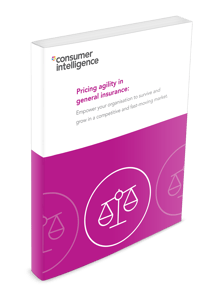
Some insurance brands deliberately offer different prices on each of the price comparison websites (PCWs) and there are good reasons why adopting this strategy may well be appropriate. Other brands strive to provide consistent pricing across all channels but fail to deliver on this approach.
One of the reasons is the impact small differences in aggregator question sets add up to when it comes to rating a risk.
At face value, the main PCWs ask the same question sets. At one level, this is a surprise as underwriters thrive on risk data. Asking questions that rivals don’t can provide competitive advantage by attracting discounts from insurer partners in exchange for enhanced risk data. At another level, technical overheads of making question set changes, negotiating those in with insurer partners and the desire to keep the question set journey as short and succinct as possible means discounts on offer need to be significant enough – and ideally from multiple partners – to provide a sustainable business case for changes.
There are, however, instances where one site asks a question others don’t. For example, in its car insurance journey, Gocompare.com asks consumers if they drive at peak time but none of the other PCWs ask this question.
And Confused asks a much more detailed set of questions in their home journey than any other PCW, for example, where a property is non-standard. All PCWs ask what type of roof the property has – with multiple answers which will include ‘thatched’. But on Confused.com, if the roof is not tiled, slate, concrete or asphalt, the consumer must select ‘Other’ and then pick an option. If the roof is thatched, they will need to select ‘Thatch Reed’ or ‘Thatch fibre’ and answer some supplementary questions such as the current condition of the thatched roof, the date it was last re-thatched and date the re-thatched roof was last inspected. This enables Confused.com to provide insurer partners with much more comprehensive risk data on non-standard risks and insurer partners to (a) quote / provide an accurate quote (rather than possibly having to ask these questions at a later stage and revise the price) and (b) offer Confused.com customers improved pricing in exchange for better risk information.
Even when the questions are the same, the options customers are given to answer each question drives a multitude of pricing differences.
An example of this which we’ve identified through working with a number of clients is the number years a consumer has held their licence. Insurer websites typically enable consumers to select anything up to 50 years but the PCWs offer a variety of options with most limited to a maximum of 25.
PCWs – and insurers on their own websites – will offer consumers a choice of options. And it’s the number and variety of these options that often drive small pricing differences which when combined, lead to a difference in pricing often sufficient to cause a customer to buy through one site over another.
Understanding these nuances of pricing in the key mass market channels and ensuring rating structures and mappings are appropriately aligned can lead to significant improvements in conversion for PCWs and insurer partners alike. In the words of Mulder and Skully, “The truth is out there”
Whitepaper: Pricing Agility In General Insurance
In this paper, we explore the current best practice in insurance pricing and give you some guidance about where the industry is about to go next.
Click here to download this exclusive whitepaper.




Submit a comment